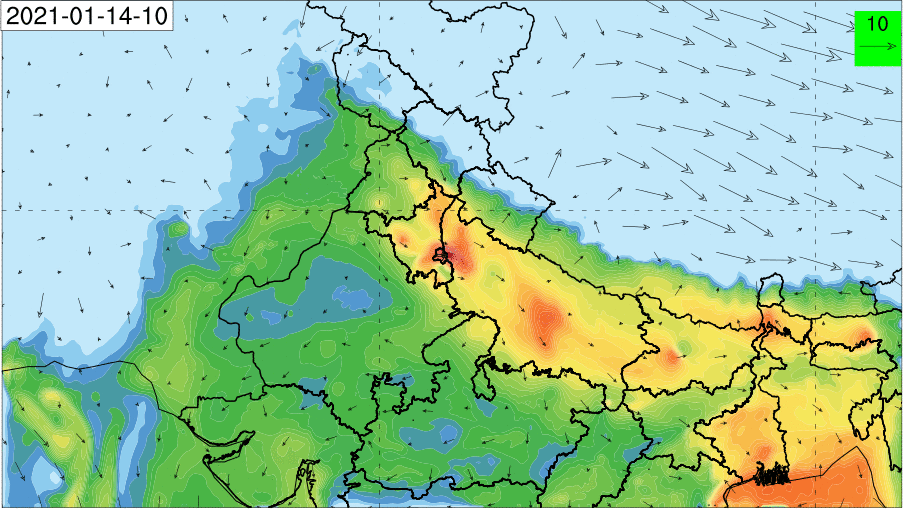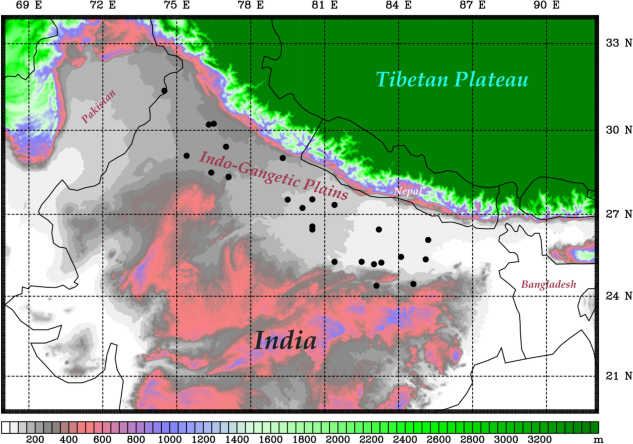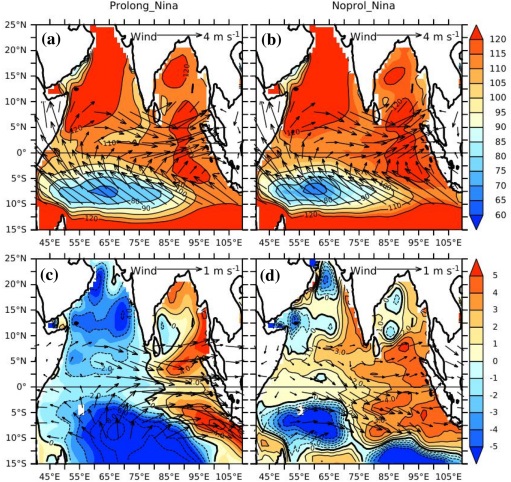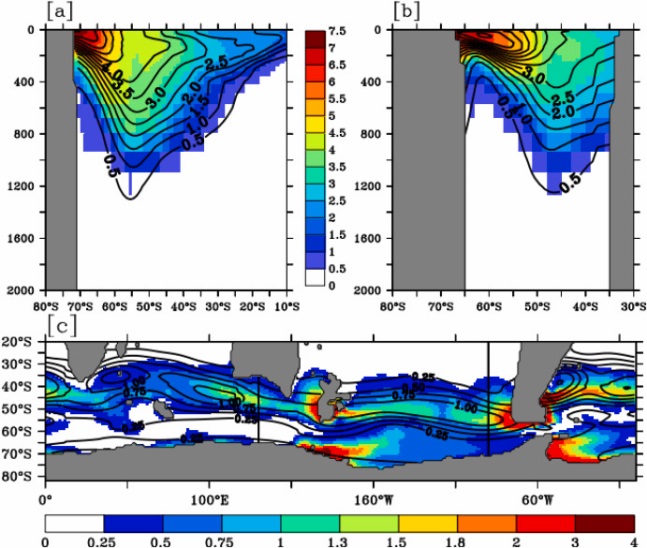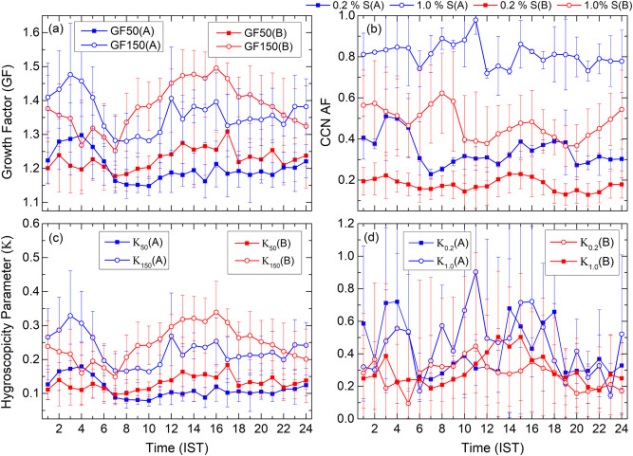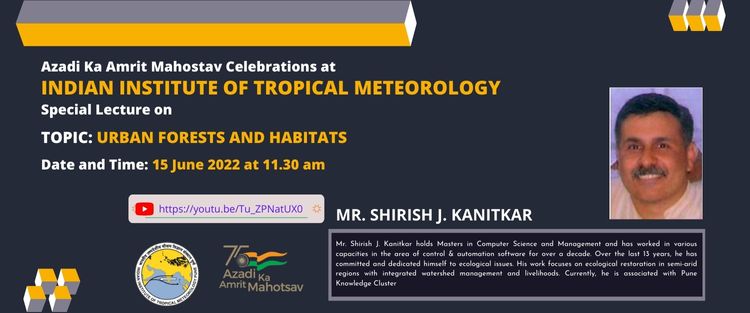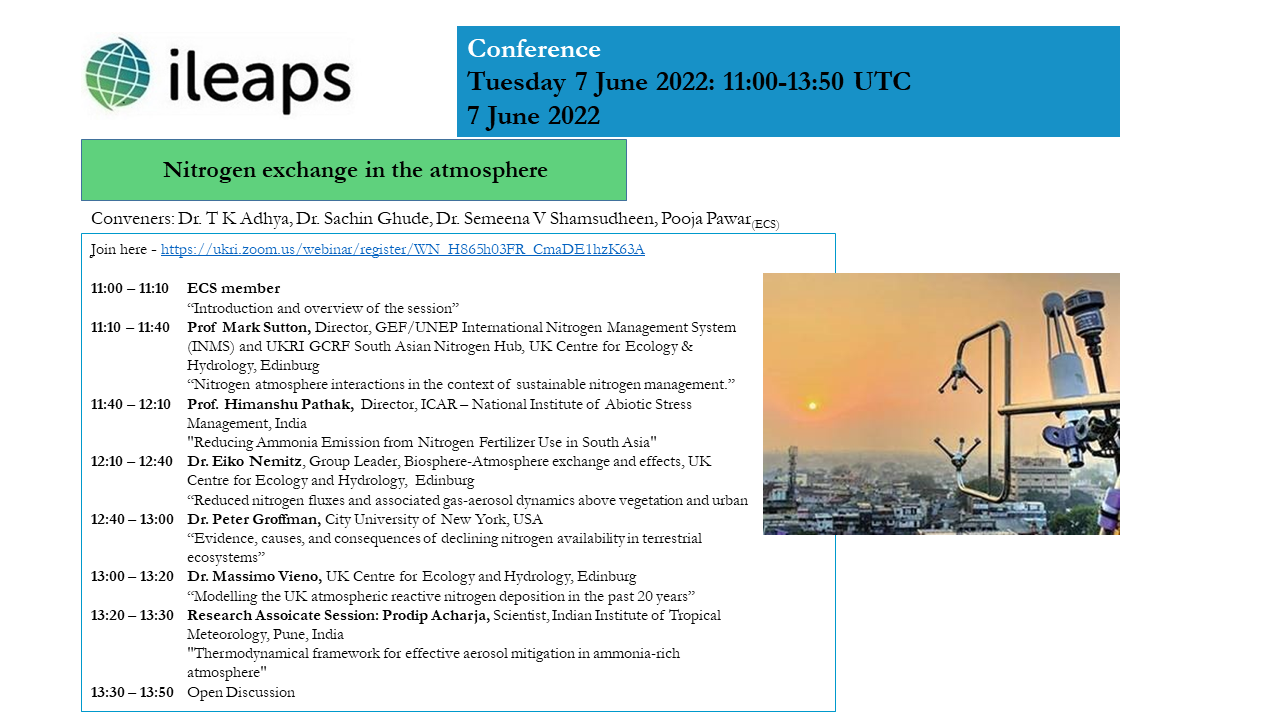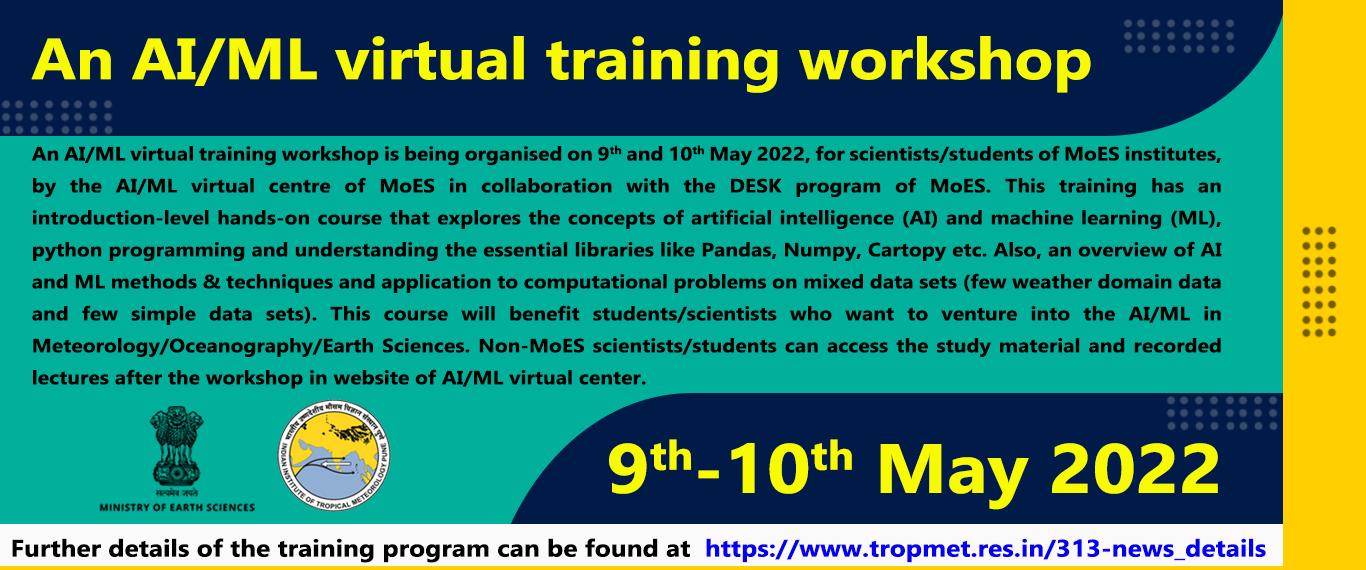Training in AI/ML Videos
Seminars / Lectures
IITM Publication Highlights
Changes in the new particle formation and shrinkage events of the atmospheric ions during the COVID-19 lockdown
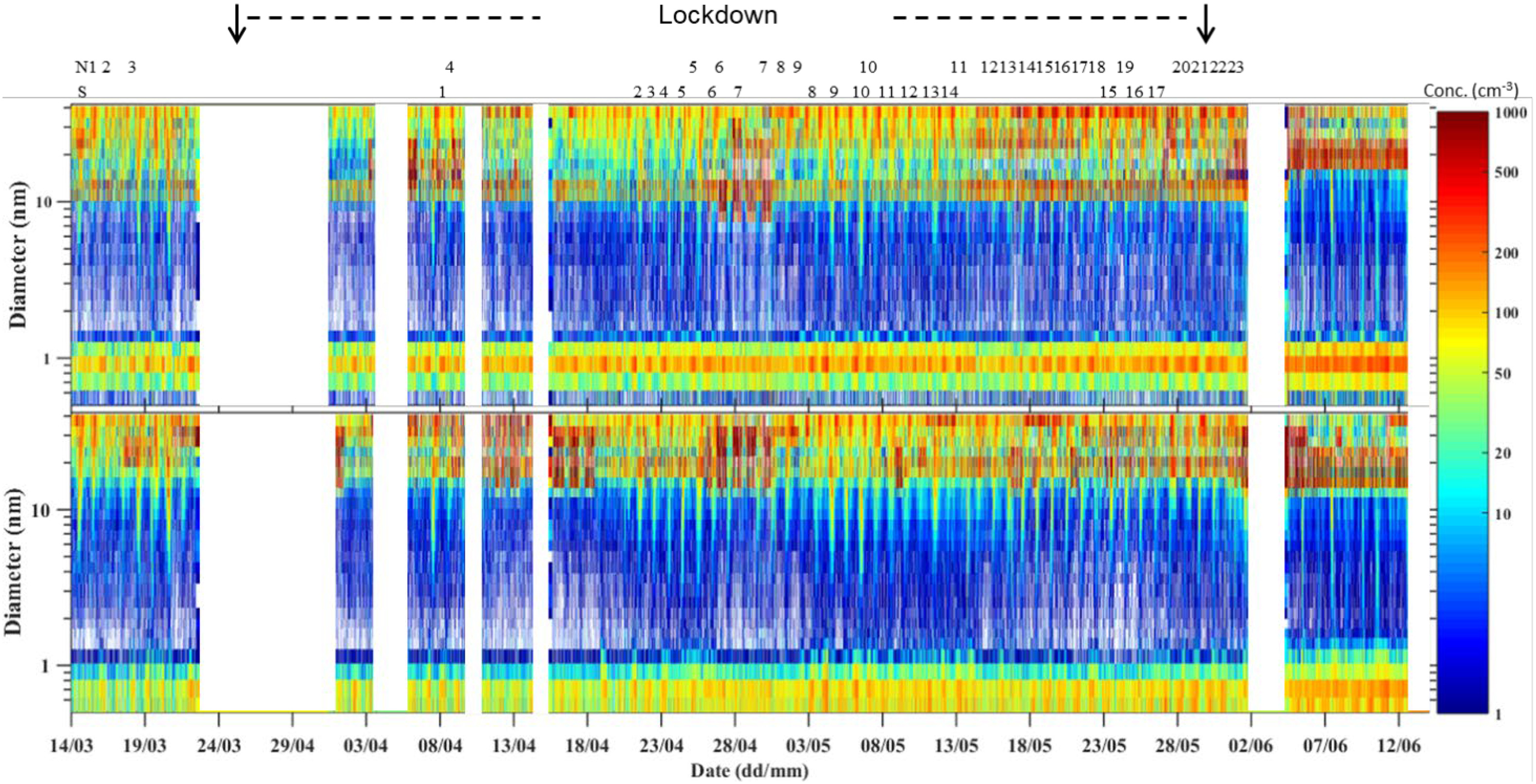 Impacts of environmental changes at Pune, India during the lockdown period imposed due to the Covid-19 pandemic, on the characteristics of the atmospheric ions and the new particle formation (i.e. the formation of molecular clusters and their subsequent growth to larger sizes) and shrinkage events have been investigated. The increase in the small and big cluster ion concentrations and the decrease in intermediate ion concentrations observed during the lockdown period have been associated with the decrease in the aerosols and precursor gases, respectively.
Impacts of environmental changes at Pune, India during the lockdown period imposed due to the Covid-19 pandemic, on the characteristics of the atmospheric ions and the new particle formation (i.e. the formation of molecular clusters and their subsequent growth to larger sizes) and shrinkage events have been investigated. The increase in the small and big cluster ion concentrations and the decrease in intermediate ion concentrations observed during the lockdown period have been associated with the decrease in the aerosols and precursor gases, respectively.
(Kamra A.K., Victor J. N., Siingh D., Singh A., Dharmaraj T., Urban Climate, 44: 101214, July 2022, DOI:10.1016/j.uclim.2022.101214, 1-18)
Read MoreRole of thermodynamics and dynamics in the diurnal cycle, propagation, and progression of convective storms in the eastern flank of the Indian monsoon trough
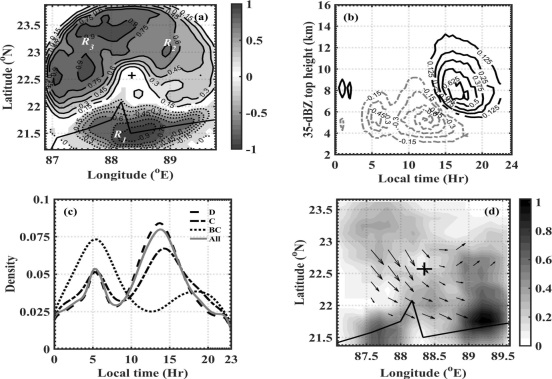 The fundamental physical processes of morning and afternoon convective peaks on the eastern edge of India’s monsoon trough (MT) have been investigated using S-band radar, satellite and reanalysis datasets. The afternoon peak is linked to maximum heating, resulting in an unstable environment, whereas the morning peak is linked to the interaction of large-scale monsoon flow with land breeze. Furthermore, daily solar heating shows a shallow to deep progression of convection. The monsoon dynamic flow takes roughly 2-3 h to sufficiently moist shallow storms into deep storms, whereas the local thermodynamic moistening process takes about 18-46 h.
The fundamental physical processes of morning and afternoon convective peaks on the eastern edge of India’s monsoon trough (MT) have been investigated using S-band radar, satellite and reanalysis datasets. The afternoon peak is linked to maximum heating, resulting in an unstable environment, whereas the morning peak is linked to the interaction of large-scale monsoon flow with land breeze. Furthermore, daily solar heating shows a shallow to deep progression of convection. The monsoon dynamic flow takes roughly 2-3 h to sufficiently moist shallow storms into deep storms, whereas the local thermodynamic moistening process takes about 18-46 h.
(Jha A.K., Das Subrata Kumar, Murali Krishna U.V., Deshpande S.M., Journal of the Atmospheric Sciences, May 2022, DOI:10.1175/JAS-D-21-0159.1)
Read MoreEvaluation and Usefulness of Lightning Forecasts Made with Lightning Parameterization Schemes Coupled with the WRF Model
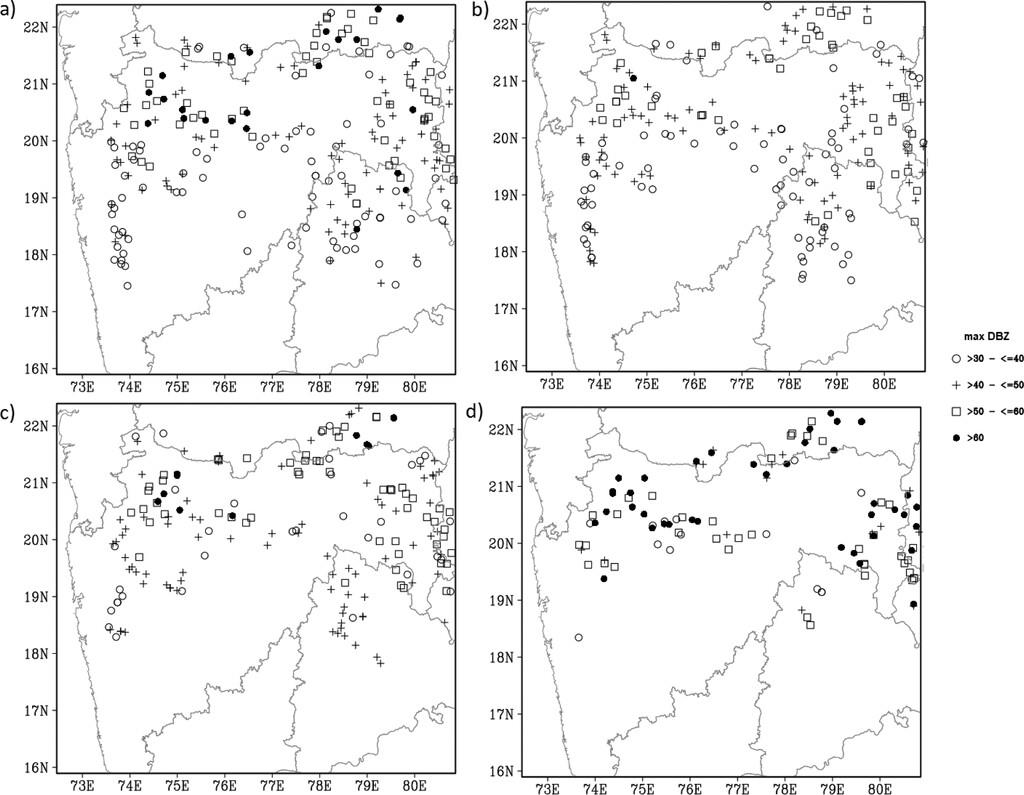 A high-resolution model, namely, the Weather Research and Forecasting (WRF) Model, with multiple microphysics parameterization schemes and lightning parameterization is used to simulate the lightning events. Initial analysis is carried out for 16 lightning events with four microphysical schemes for the usefulness in lightning prediction. Objective analysis is carried out and quantitative model performance is assessed.
A high-resolution model, namely, the Weather Research and Forecasting (WRF) Model, with multiple microphysics parameterization schemes and lightning parameterization is used to simulate the lightning events. Initial analysis is carried out for 16 lightning events with four microphysical schemes for the usefulness in lightning prediction. Objective analysis is carried out and quantitative model performance is assessed.
(Gayatri V.K., Mohan G.M., Hazra A., Pawar S.D., Pokhrel S., Chaudhari H.S., Konwar M., Saha Subodh K., Mallick C., Das Subrata K., Deshpande S.M., Ghude S.D., Domkawale M., Rao Suryachandra A., Nanjundiah R.S., Rajeevan M., Weather and Forecasting, 37, May 2022, DOI:10.1175/WAF-D-21-0080.1, 709–726)
Read MoreThe intraseasonal fluctuation of Indian summer monsoon rainfall and its relation with monsoon intraseasonal oscillation (MISO) and Madden Julian oscillation (MJO)
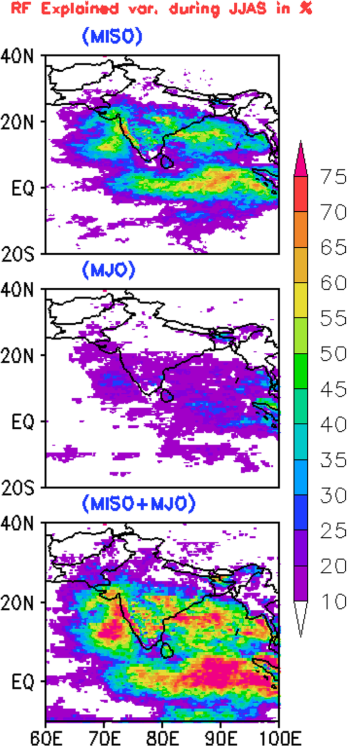 The intraseasonal fuctuations of Indian summer monsoon rainfall (ISMR) are mainly controlled by northward propagating monsoon intraseasonal oscillation (MISO) and eastward propagating Madden Julian oscillation (MJO). The relationship of active/break spells of the Indian summer monsoon with the phases of MISO and MJO was analysed. A strong relationship between active and break spells with the MISO phases is evident .The association of active/ break spells with MISO phases is more prominent than with MJO phases.
The intraseasonal fuctuations of Indian summer monsoon rainfall (ISMR) are mainly controlled by northward propagating monsoon intraseasonal oscillation (MISO) and eastward propagating Madden Julian oscillation (MJO). The relationship of active/break spells of the Indian summer monsoon with the phases of MISO and MJO was analysed. A strong relationship between active and break spells with the MISO phases is evident .The association of active/ break spells with MISO phases is more prominent than with MJO phases.
(Dey Avijit, Chattopadhyay R., Joseph S., Kaur M. , Mandal R., Phani R., Sahai A.K., Pattanaik D.R. , Theoretical and Applied Climatology, 148, April 2022, DOI:10.1007/s00704-022-03970-4, 819–831)
Read MoreThe Indian summer monsoon and Indian Ocean Dipole connection in the IITM Earth System Model (IITM-ESM)
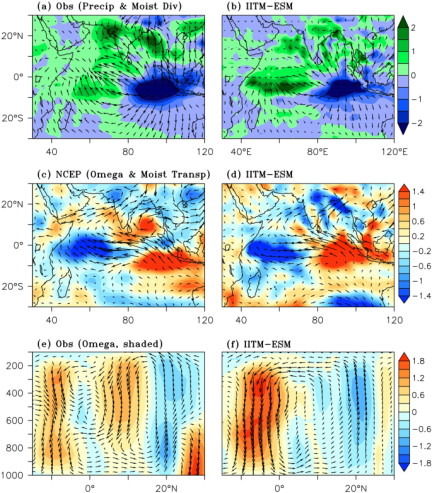 This study presents an analysis of IOD and its links to the Indian monsoon based on the historical simulations from the IITM Earth System Model (IITM-ESM) and other models that participated in the 6th phase of Coupled Model Intercomparison Project (CMIP6). The IITM-ESM shows an enhancement in monsoon rainfall over the Indian landmass during positive IOD events.
This study presents an analysis of IOD and its links to the Indian monsoon based on the historical simulations from the IITM Earth System Model (IITM-ESM) and other models that participated in the 6th phase of Coupled Model Intercomparison Project (CMIP6). The IITM-ESM shows an enhancement in monsoon rainfall over the Indian landmass during positive IOD events.
(Prajeesh A.G., Swapna P., Krishnan R., Ayantika D. C., Sandeep N., Singh Manmeet., Modi A., Ingle S., Climate Dynamics, 58, March 2022, DOI:10.1007/s00382-021-05999-z, 1877–1897)
Read MoreNew Publications
Climate change response in wintertime widespread fog conditions over the Indo-Gangetic Plains
Hingmire D., Vellore R., Krishnan R., Singh Manmeet, Mety A., Gokul T., Ayantika D.C., Climate Dynamics, 58, May 2022, DOI:10.1007/s00382-021-06030-1, 2745–2766
Prolonged La Niña events and the associated heat distribution in the Tropical Indian Ocean
Mukhopadhyay S., Gnanaseelan C., Chowdary J.S., Parekh A., Mohapatra S., Climate Dynamics, 58, May 2022, DOI:10.1007/s00382-021-06005-2, 2351–2369
Is Amundsen-Bellingshausen Seas-Low affecting trace gas air-sea fluxes in the Antarctic Ocean?
Valsala V., Deep Sea Research Part I, 183: 103725, May 2022, DOI:10.1016/j.dsr.2022.103725, 1-8
Hygroscopic growth and CCN activation of aerosols during Indian Summer Monsoon over a rain-shadow region
Jayachandran V., Bera S., Bankar S.P., Malap N., Varghese M., Safai P.D., Konwar M. Todekar K.S., Jaya Rao Y., Murugavel P., Prabhakaran Thara, Atmospheric Research, April 2022, DOI:10.1016/j.atmosres.2021.105976, 1-13
PDF Publisher LinkIITM Events
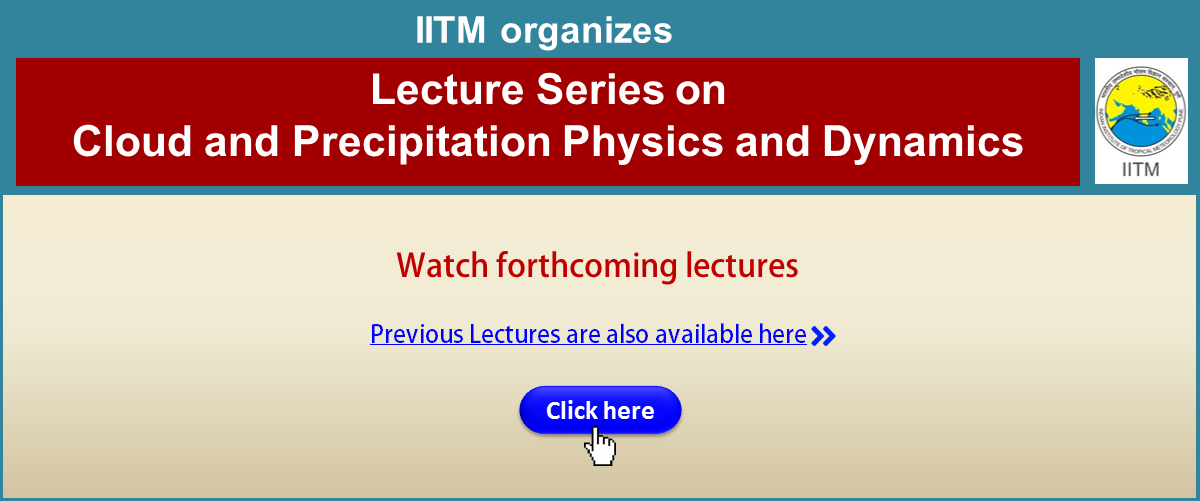
Lecture Series-Cloud and Precipitation Physics and Dynamics
(ongoing since Oct 2021)
The lecture series aims to understand cloud and precipitation processes through the latest state-of-the-art approaches to observe, simulate, and identify key uncertainties associated with aerosol-cloud-precipitation interactions. The lectures will be delivered by some of the world's leading and renowned scientists.
Read More
Watch Previous lectures
Watch lectures (November 2021 onwards)


